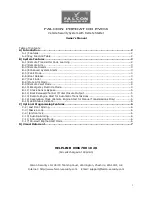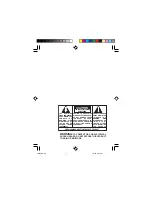
Refrigerated Storage Design Guide
VESDA
®
The VESDA detectors used to protect the ceiling void MUST be configured as individual fire zones.
Ceiling void pipes MUST NOT enter any other areas, nor should ceiling void detectors be used to
simultaneously monitor areas outside the ceiling void.
3.8
Other Areas To Be Protected
For non-refrigerated storage areas such as those used for control, monitoring, loading and office
space, the sample hole spacing and pipe network layout are identical to those for the general office
environment described in the VESDA System Design Guide
[2]
, with reference to local codes and
standards where applicable. Detector sensitivity can be adjusted to meet performance
requirements.
Note:
It is worth considering high sensitivity smoke detection in the areas containing refrigeration
control and support equipment, since smoke or fire damage in these areas would disrupt business.
4.
Preventing Condensation And Crystallization
4.1
The Effects Of A Temperature Drop
Condensation will occur when the air temperature drops below its due point. The result is the
formation of water droplets (if the due point is above 0°C (32°F)) or ice crystals (if the due point is
below 0°C (32°F))
[16]
. Inside the VESDA pipe network, condensation is unlikely and will only occur if
the sampled air is cooled as it passes along the pipe through an area of lower temperature than
that from which the air was sampled. On the outer surface of pipes, condensation is expected and
can be tolerated.
During system design, all areas to be protected must be categorised according to the criteria listed
below:
•
The temperature and humidity changes that will occur if the function of the protected area is
changed, for example, from a chiller to a cooler.
•
The points in the pipe network which are most likely to be prone to condensation. This is done
by assessing the temperature of the sampled air and the temperature of the air surrounding the
sample pipe network.
•
The air-tightness of the pipe network, including the detector exhaust pipe.
•
The distances, from both the protected area entrances and chiller air supply paths, of both the
sample pipe and sample holes.
4.2
Condensation On The Sample Pipe Outer Surface
Condensation occurs on the outer surface of the sample pipes and capillary tubes where they exit
the cold storage area and enter warmer environments such as a ceiling void or other non-freezer
areas. Depending on the temperature of the pipe surface, in these areas, water droplets or ice
crystals will form. A water tray should be used to collect any liquid before it spills over the ceiling
insulation panels as shown below (Figure 8).
Note:
The water tray must be large enough to allow evaporation to occur at an acceptable rate to
prevent overflow.
10













































